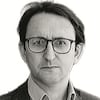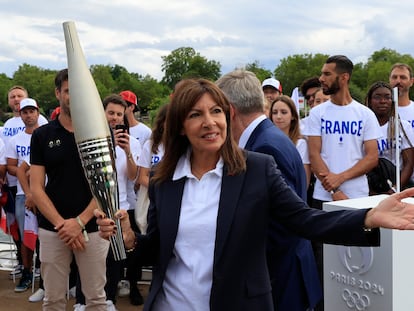Paris prepares for the ‘banlieue’ Olympics
The 2024 Olympic Games will hardly change the French capital, but they might transform the outskirts of the city, an area marked by unrest, poverty and exclusion, but also by youth and dynamism
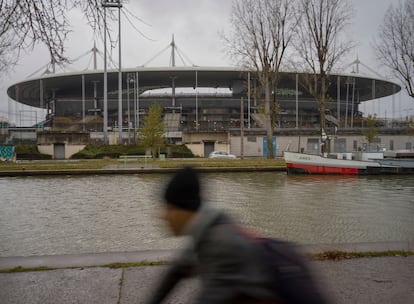
They feel disregarded. Abandoned. Here, everything is far away. Paris is a strange territory. They are looking for work and accumulating rejections. They have the wrong names. Live in the wrong neighborhoods. They are three friends; three children of immigration; three boys who one cold Saturday in December walk among highways, elevated tramways and vacant lots through the impoverished outskirts north of Paris that next summer, for the duration of the 2024 Olympic Games, will become the center of the universe.
The gang enters a fast food restaurant in Bondy, Mbappé's town. They are Moktar, Younès and a third friend who prefers not to reveal his name: we will soon find out why. They order a plate of pasta and some soft drinks, and as they eat, their world spreads out before the gaze of the journalists who came from the comfortable center of the French capital.
“They tell me: ‘Foreign name. Muslim religion.’ And I live in 93, to boot.” 93 is the administrative number of Seine-Saint-Denis, the poorest province in France and the one with the most immigrants, a third of the population. Also, the youngest in the country. The speaker is Moktar, 18 years old, of Tunisian origin, a business student, with metallic glasses and a small mustache that give him an intellectual air. Without a doubt the one who is doing better.
Younès, who is 18 and Moroccan, says that he has sent dozens of resumes, but it’s just not happening. “They don’t want a foreigner.” Moktar adds: “We have to make twice as much effort as others to get ahead. It’s a bit of an injustice. All this creates hatred. It is kept bottled-up. And then it explodes.”
The third friend is of Turkish origin. He is 19 and has a problem: he wears an electronic bracelet on his ankle. He was convicted due to his involvement in the burning of the town hall of his town, Bobigny. It happened during the riots following the death in June of Nahel, a teenager of North African origin who was shot by a police officer. He was released, but with an ankle monitor that requires him to return home every day before 6:00 p.m. During the conversation, he repeats a phrase: “I’m pissed off, so I break things.”
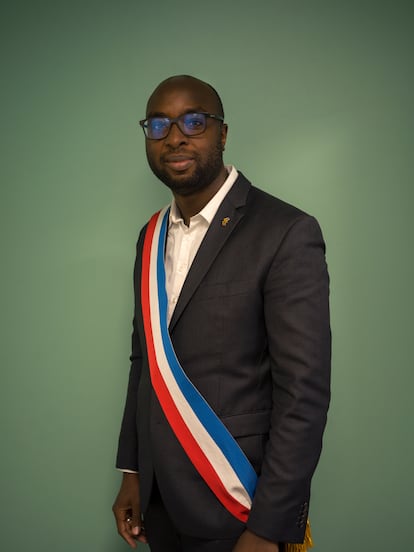
This is the banlieue, the multicultural and impoverished city suburbs populated by generations of immigrants, infamous due to its insecurity, riots and Islamist ghettos. This is Seine-Saint-Denis, a very particular mix. Dangerous and exciting. Here, the basilica where the remains of the kings of France rest coexists with halal shops, mosques and veiled women. And with a curious nomenclature: Lenin Avenue or Cosmonaut City, the legacy of what once was a communist fiefdom.
But there is more than that. Seine-Saint-Denis is home to the largest stadium in France, the highest number of start-ups per capita and two airports. “All it’s missing to be California is the sea,” President Emmanuel Macron said a few years ago, as if trying to reassure them (and himself).
From July 26 to August 11, Paris will host the Summer Olympic Games, one century after the last Olympics that were held in this city. Then, from August 28 to September 8, the Paralympics will take place.
Paris will shine. But Paris will not undergo a transformation, like Barcelona did in 1992. What will change will be the outskirts of the city. Because, strictly speaking, these will not be the Paris Olympics. Or not just Paris. They are the Seine-Saint-Denis Olympics. The banlieue Olympics.
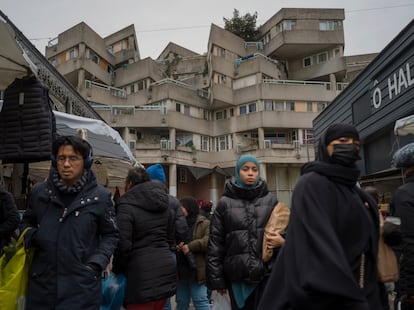
The Stade de France — the national stadium of France — is there, site of athletics competitions, as well as the Aquatic Center for swimming, one of the few new facilities, in addition to the Athletes’ Village (the official name of the Olympic and Paralympic city) and the construction of the Grand Paris Express, a public transport system that will connect the cities and neighborhoods of the region without passing through the capital. There is a possibility, perhaps remote, that this will achieve something far beyond sports: that kids like Moktar, Younès and their friend feel truly part of their own country. That these neighborhoods and cities stop being separate territories and can truly be the European California.
Urban transformation
Mohamed Gnabaly remembers the 2016 Euro Cup final, when he was denied entrance to the VIP stand at the Stade de France despite having an invitation. “I’m a mayor,” he explained, but they didn’t believe him. “For them,” he says, “a working-class, Black mayor was unimaginable.” In the end, he was able to enter. Gnabaly is the son of Senegalese parents; his father is an imam, and he is the mayor of L’Île-Saint-Denis, the smallest of the municipalities through which the Village of Athletes extends (the other two are Saint-Denis and Saint-Ouen). L’Île-Saint-Denis — an island with 8,500 inhabitants and 85 nationalities — is a microcosm of the changes that the Olympic Games will bring: ecological neighborhoods, a bridge, shops and restaurants. It is also a mirror of what remains to be dealt with. As in so many municipalities in this province, there were incidents after the death of young Nahel in June. The ground floor of the town hall, a construction from the early 20th century, was set on fire. The building is still closed for renovation, so the mayor receives us in a temporary office.
“Everything will be fine,” he says when we ask him about the Olympic Games. “In Paris, practically everything is built. It’s in our house where urban transformation is at stake.” He takes us for a walk in one of the newly built neighborhoods, next to the Athletes’ Village, where workers race against the clock. He takes us to the trendy Turkish kebab establishment and the Afro hair salon, frequented by local clients and movie celebrities. The mayor speaks with Namani, the owner. She is 43 years old, of African descent on her father’s side, Catalan on her mother’s. For her, it was important to settle on the island: “Here, everything is yet to be done.”

In the banlieue, everything is possible, and everything is complicated. The highways that split the cities, for example. Or the Paris beltway that acts as a mental wall. The Paris of Notre Dame and the Eiffel Tower — the one that will shine in all its splendor next summer — is exotic for the inhabitants of the banlieue, just like the banlieue is exotic for France’s well-to-do, like the narrator of Aurélien Bellanger’s novel Le Grand Paris, for whom Seine-Saint-Denis “resembled the forbidden zone of Chernobyl, with its street names straight out of Soviet folklore, its desolate, deadly industrial wastelands, its dangerous, hostile neighborhoods.”
Between both worlds, an umbilical cord: métro line 13. The most multicultural subway line in the city. Crowded at rush hour. From Saint-Ouen to the center of Paris and from there to the 11th arrondissement, east of the city: almost an hour. There, one of the people who have given the most thought to the matter of how to sew the seams of this global metropolis waits for us. In a room with a model of the Athletes’ Village, architect and urban planner Dominique Perrault declares: “The attraction of Paris is its culture, its museums, its restaurants, its way of life. But the living force of Paris lies outside of Paris, in the Greater Paris.”
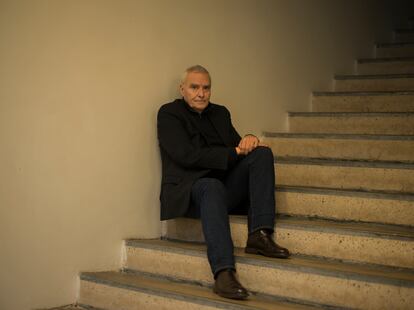
The Greater Paris
At 70 years old, Perrault is a living classic of French architecture. Author, as an architect, of the François-Mitterrand Library and some Olympic works in Berlin and Madrid. As an urban planner, of the Athletes’ Village in Seine-Saint-Denis. He conceived it; the architects did the rest. The concept was to create a city with perpendicular avenues that gently descended towards the river.
The river. With its bends and canals, its islands, its natural landscapes, its factories and river ports. Perrault believes that, despite the enormous differences, there is something in common between Barcelona 1992 and Paris 2024: “the water. The entire Barcelona project consisted of reclaiming a series of industrial and abandoned territories to open up to the sea. The Paris project is different, but water is also the central element, because the candidacy and the events are organized around the Seine.” The river is the “blue thread” that sews together this uneven, varied geography. Thus, according to Perrault, “a new territory” is revealed.
The Athletes’ Village is a piece of a frayed puzzle. It is not that easy to make sense of it in an era in which a genius or a planning authority is no longer conceivable. At least a mental change will remain: “The Greater Paris means the disappearance of the notion of banlieue.” The banlieue was the place outside the city walls. Not anymore. The city is now decentralized.
Walking through the Seine-Saint-Denis, one sees posters against the Olympic Games. One, faded, says: “The planet is burning. Stop playing.” There is no enthusiasm, but neither is there a broad opposition movement.
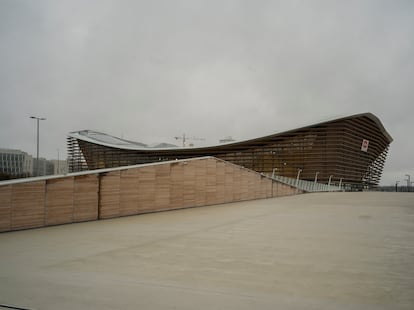
“Does it respond to the people’s needs?”
We are in a café in the city of Saint-Denis with geographer Cécile Gintrac, a member of the citizen oversight committee of the 2024 Olympic Games. “The daily life of the inhabitants of 93 will not change,” she notes. She believes that the new constructions should include more social housing: “This will not solve the housing crisis.” In the distance we can see the highway, the Stade de France and the Aquatic Center. Another criticism: as long as the highways continue to crisscross these cities, environmental quality will not improve. Also: the limited impact on local employment, and what Gintrac refers to as “the algorithmic surveillance and the potential police violence.” And more: the risk that the new facilities do not translate into better access to sports activities. “There is a load of public money invested,” she says, “but does it respond to the people’s needs?”
“The Olympic Games will be in our house, but they reject us. The tickets are expensive, the rents are going up,” complains Moktar, one of the three friends from Bobigny and Bondy. After eating, we walked among the blocks of buildings where traffickers mark their territory with graffiti. Later the three of them will go to the center of Paris to buy a coat. That is how you spend a Saturday afternoon in the banlieue.
“I have the right to the best”
Saturday night, Stade Bauer in Saint-Ouen, an official training field for the Olympics and the stadium of the Red Star, a soccer club founded in 1897 that is associated with a left-wing revolutionary spirit. They are playing against Nîmes, a match in the National League, the third division. Red Star wins 2 to 0. The crowd goes wild. They are the boys and girls of the banlieue. Mixed. Happy. A picture of what can go well in a country distressed by the specter of conflict. In the VIP stands, few follow the game. Between canapés and drinks, groups form. Contacts are made.

Karim Bouamrane, the mayor of Saint-Ouen, a socialist with the air of a French Obama, tells us: “The riots are not a problem of the banlieue. The problem is how we manage to give meaning to the word ‘republic’ today. The word ‘republic’ no longer means anything to an entire category of young people. When there is no employment, when there is no hope, when there is no housing, when there are no quality public services, when there is no education for the children...”
The mayor continues: “The Olympic Games are a way to accelerate the policy of shared progress.” He says that they have helped him “renew” and “beautify” Saint-Ouen. “If you go to a place and it’s ugly and gray,” he says, “you don’t feel safe.”
A California without sea, as Macron said? A California without sun? “California is a Seine-Saint-Denis with a microclimate,” answers Bouamrane. “With these Olympic Games, people will be able to say: ‘I come from Seine-Saint-Denis, and I have the right to the best.’”
Sign up for our weekly newsletter to get more English-language news coverage from EL PAÍS USA Edition
Tu suscripción se está usando en otro dispositivo
¿Quieres añadir otro usuario a tu suscripción?
Si continúas leyendo en este dispositivo, no se podrá leer en el otro.
FlechaTu suscripción se está usando en otro dispositivo y solo puedes acceder a EL PAÍS desde un dispositivo a la vez.
Si quieres compartir tu cuenta, cambia tu suscripción a la modalidad Premium, así podrás añadir otro usuario. Cada uno accederá con su propia cuenta de email, lo que os permitirá personalizar vuestra experiencia en EL PAÍS.
¿Tienes una suscripción de empresa? Accede aquí para contratar más cuentas.
En el caso de no saber quién está usando tu cuenta, te recomendamos cambiar tu contraseña aquí.
Si decides continuar compartiendo tu cuenta, este mensaje se mostrará en tu dispositivo y en el de la otra persona que está usando tu cuenta de forma indefinida, afectando a tu experiencia de lectura. Puedes consultar aquí los términos y condiciones de la suscripción digital.
More information
Archived In
Últimas noticias
Mexico seeks to shore up its defenses following US incursion in Venezuela
Hope gives way to uncertainty among Venezuelan exiles in the US after Maduro’s capture
Cubans look to Venezuela fearfully after Trump’s incursion: ‘We could be next’
The operation in Venezuela to capture Maduro threatens to widen the cracks in the MAGA movement
Most viewed
- Alain Aspect, Nobel laureate in physics: ‘Einstein was so smart that he would have had to recognize quantum entanglement’
- Alvin Hellerstein, a 92-year-old judge appointed by Bill Clinton, to preside over Maduro’s trial in New York
- Gilles Lipovetsky: ‘If you want to live better and fall in love, take Prozac, don’t look to philosophy’
- Cuba confirms death of 32 of its citizens in the US attack against Venezuela
- Why oil has been at the center of Venezuela-US conflicts for decades
